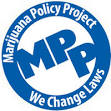There is loud minority out there that says: we cannot legalize cannabis because there is no research, and thus no basis for going forward. Its members include the Harper government, Health Canada, the RCMP, the Canadian Centre on Substance Abuse, select American republicans, the DEA, the National Institute for Drug Abuse (NIDA), and a large bouquet of private drug abuse groups. Despite this stance, these people have a favourite study: the one that says: cannabis harms the adolescent brain. They have a favourite future dystopia, with stoned pregnant women and “drugged drivers.” Hail St. Stephen. For patrons of legalization, who have never advocated cannabis for drivers, teens or the unborn, the drug abuse perspective is frustratingly beside the point. For cannabis fans widely read in the literature, the claim, “there is no research.” is baffling. The sad fact is, minority members are truely out of touch with history and with the available research. Drug abuse researchers do not look at the larger body of cannabis studies. The big media generally echo the drug abuse researchers’ agenda. When individuals act this way we say they have some kind of dissociative disorder.
But it will hardly do to have ordinary citizens needlessly displaying its symptoms. So in honour of knowledge, common sense, and moderation in social insanity, I dedicate the rest of this blog to describing a few of the more prominent mountains out there, of good information.
Oh, and my apologies in advance, to Canadians. Most of the following sources are American. I’ve booked a blog to talk about this shortcoming at a later date.

There are five fabulous, if not furry, online sources of cannabis research. The first and largest is the Schaffer Library of Drug Policy, founded by Clifford Schaffer after his mom developed severe, chronic pain soothe-able only by cannabis.[1] If you are keen to go exploring, and do not know this site, go and visit. The Schaffer Library has links to everything: history, legal decisions, government funded commissions, and scientific research all across North America and beyond. A second, associated site is DCRNET, the drug reform co-ordination network.[2] Third is the Marijuana Policy Project (MPP), founded by NORML members, Rob Kampia, Chuck Thomas and Mike Kirshner.[3] MPP is the largest organization that works solely on policy reform. It has supported ballot initiatives in the US wherever they have taken place. Then there is the Drug Policy Alliance (DPA), formerly the Lindesmith Centre, directed by renowned activist, Ethan Nadelmann.[4] If you want ‘war on drugs’ statistics, that’s the place to go. And finally we have MAP Inc., the Media Awareness Project, created by the non-profit organization, DrugSense in 1995.[5] MAP employs ‘news hawks’ to search out media representations of cannabis, including letters to newspaper editors, which then get added to the overall file. Herb Couch, coordinator for Canada’s Educators for

Sensible Drug Policy, has been a news hawk since the 90s. If you want to know what the media have been telling us since 1995, look at the MAP.
For policy makers, the central question is how dangerous or benign it might be to legalize cannabis. The most important resources for this group are the commissions established and funded by local, state or provincial, and federal governments, designed precisely to help elected officials plan policy. You will find links to these in the Schaffer Library under Major Studies. You may be surprised to learn that there have been 44 of them. I was. The list begins with the Indian Hemp Drugs Commission of 1894-5, a 3,500 page 7-volume report by and for the British government.[6] Its summary states: “Viewing the subject generally, it may be added that moderate use of these drugs is the rule, and that excessive use is comparatively exceptional. The moderate use produces practically no ill effects.” The Baroness Wootton Report, Britain’s 1965 commission on the subject supported this view. Schaffer’s Major Studies list ends with the report of the Canadian Senate Special Committee, 2002 published in 2 large volumes. You don’t need to read this report to be impressed. You’ll be suitably blown away if you read the table of contents. The Senate report recommends a compassion-based approach for therapeutic use, and regulation for elective use.
Listed in between these dates under Major Studies are reports from the US, UK, World Health Organization, the Netherlands, Australia, Switzerland, and elsewhere. They are a

breath of fresh air. An especially enjoyable moment here is the 1988 ‘findings of fact’ report by Frances L. Young, the DEA’s Chief Administrative Law Judge. Young’s report included submissions from a wide range of MDs including holistic, medical practitioner, Dr. Andrew Weil. It concluded: “Marijuana in its natural form us the safest therapeutically active substance known to man.” What do think of the phrase “therapeutically active?” I’m thinking of adopting it.
Equally important are well-researched accounts of cannabis history. No political leader can afford to be ignorant of cannabis prohibition’s racist roots, and of the pro cannabis legal battles that have been fought and won. The Schaffer Library has a great historical links, complete with a reefer madness section. The DPA has a good chronicle of the more recent events in the war on drugs.

Then there are books. The book-length literature on cannabis is multi-varied, with styles ranging from poetry to hardheaded non-fiction. It’s huge; it would fill a small library. For judges, elected officials and bureaucracies contemplating cannabis regulation, the books best suited are those written in the language of science, or social science. I’d like to draw attention to four recent works that meet this requirement, all meticulously sourced, and with useful indexes. The first two are Mitch Earleywine’s 2002 work, Understanding Marijuana: A New Look at the Scientific Evidence, and Julie Holland’s 2010 edited collection of essays, The Pot Book: Its Role in Medicine, Politics, Science, and Culture. Both take a hard look at claims that cannabis causes depression, or brain damage, or social chaos. Neither is utopian; both are solidly sensible, and refute the notion that cannabis is a dangerous drug. My favourite moment in Earleywine’s book is his description of a funded study in which participants on cannabis were shown a list of words and asked to memorize them. They were then shown a second list, and asked which names on the second list had appeared on the first. Candidates were not so good at this task. But they were as good as anyone at recalling as eyewitnesses, facts relevant to real events. Earleywine concludes: “Perhaps cannabis has less impact on memory for meaningful events…and more impact on memory for meaningless stimuli like lists of words.” Ten points for humour. When’s the last time cannabis fans were attracted to meaningless stimuli?
Two other books along these lines are Susan Boyd’s, 2014 work, Killer Weed: Marijuana Grow Ops, Media, and Justice, and Jefferson M. Fish’s 1998 edited collection of essays, How To Legalize Drugs. Boyd’s work, while focused on media representations of cannabis gardens in British Columbia, offers a broad historical perspective on prohibition and on media in general. Supplement it with the MAP, and you have an accessible, super duper research tool. Fish’s collection, which includes a piece by veteran activist and medical practitioner, Lester Grinspoon, is important because it addresses the theoretical and philosophical aspects of prohibition. Fish’s own essay for example, looks at the corrupting effects of prohibition: the way it has driven substance concentration, for example. Whiskey became more prevalent during alcohol prohibition because its compactness made it easier to store, hide and transport than beer and wine.
Other essays address the crucial matter of social justice. What role should governments play in the lives of citizens? What rights do citizens have? Have we really agreed to a social contract that gives states the right to penalize people for consensual, harmless activities?
Finally, no policy maker will be accurately informed without an unadorned look at the anti-cannabis tactics employed since the mid 1980s by law enforcement officers in North America, especially in the US. Highly recommended reading here is Radley Balko’s text, Rise of the Warrior Cop: The Militarization of America’s Police Forces. By the time readers have ploughed through Balko’s descriptions of no-knock raids, flash-bang grenades, SWAT teams, armoured vehicles, helicopters, drones, and family dogs routinely shot in the head, they will have a clear vision of the police state—the obvious end game for the war on drugs. On this matter DPA’s Ethan Nadelmann is equally eloquent. Our Harper prides himself on representing this war’s more gentile form. We Canadians try not to get too embarrassed.
Of course, we would love all elected officials and members of state bureaucracies to learn about the human endocannabinoid system, and cannabis’ medical applications. We would like it if they delved into the spiritual view. Many cultures past and present have found cannabis’ effects enlightening and deepening. But I’ll be happy if members of Parliament, Congress, and their respective Senates on this continent just read some of the commission reports, and consider cannabis from the perspectives of history, social justice, and social science.
Drug Abuse oriented governments, law enforcers, and private institutions do not speak from any of these perspectives. They don’t acknowledge them. Their websites don’t acknowledge them. When challenged from any such viewpoint they fail to respond. There is a virtual galaxy of relevant reading material out there, and they behave as if don’t see it. Well I don’t know what this is, but I’ve chosen a name for it—negative hallucination. It’s a condition for which I suspect there may be no remedy. But for those not yet caught in its thrall, let’s repeat whenever possible: There is a mountain of research out there. Just read it.
[1] http://www.druglibrary.net/schaffer/
[2] http://www.druglibrary.org/
[3] http://www.mpp.org/
[4] http://www.google.ca/search?q=drug+policy+alliance&hl=en-CA&gbv=2&oq=&gs_l=
[5] http://www.mapinc.org/
[6] http://cannabisdigest.ca/marijuana-lunacy-magnificent-failure-indian-hemp-drugs-commission/





